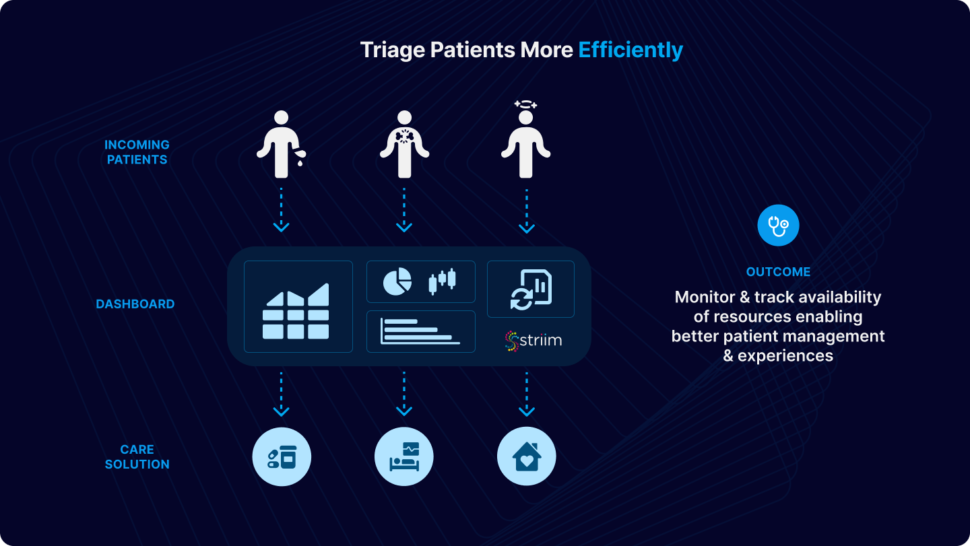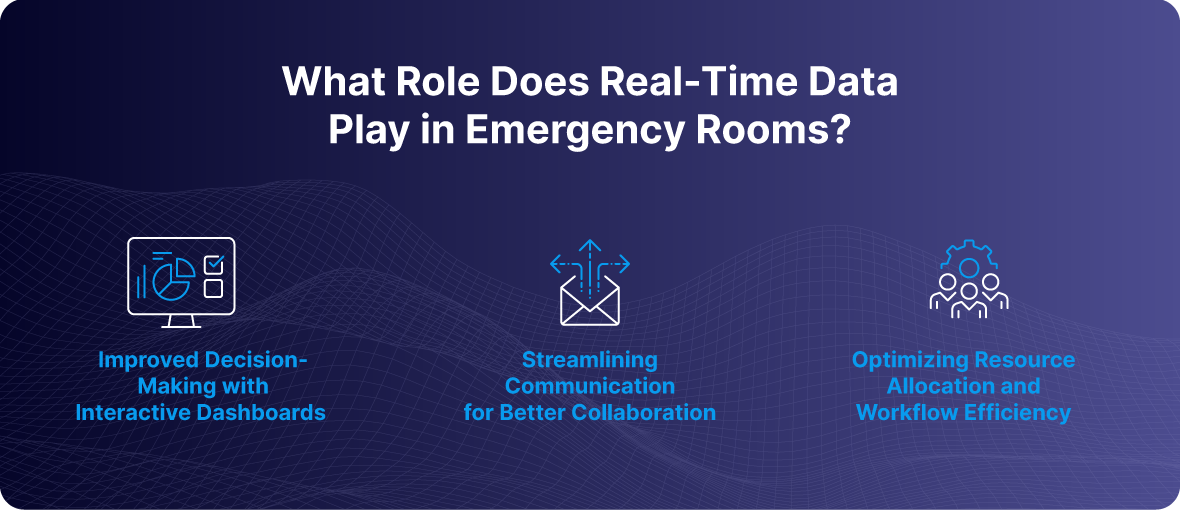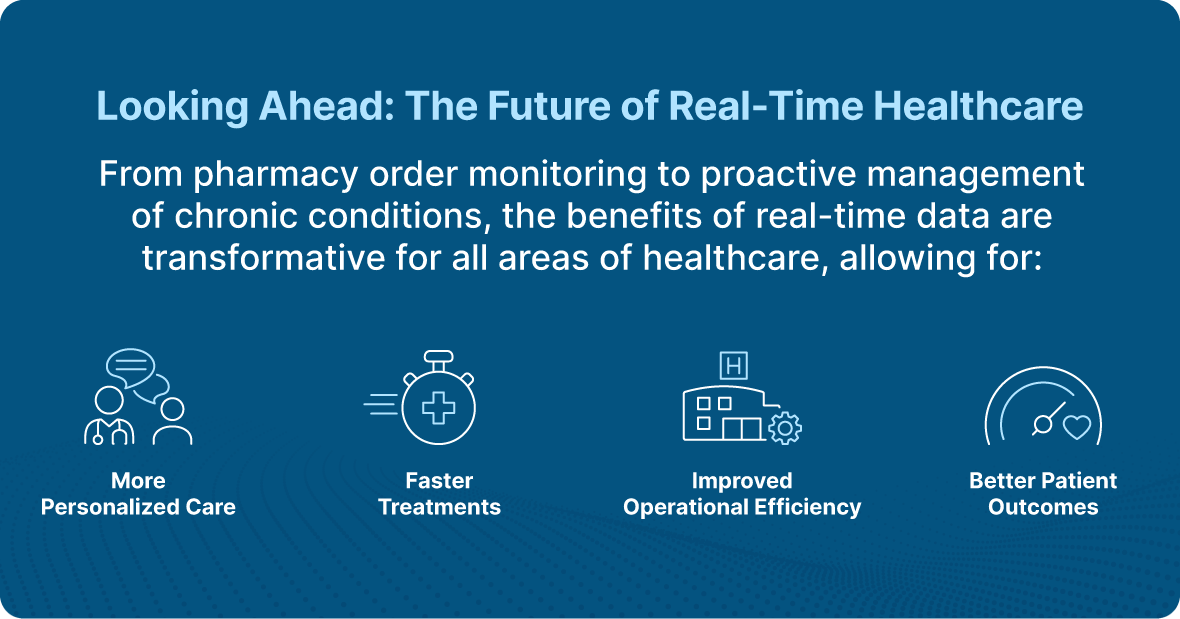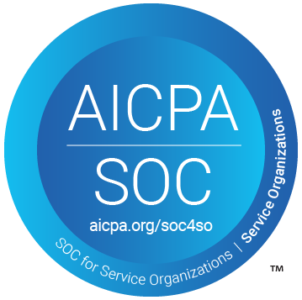In emergency rooms, where the stakes are highest and every second counts, having access to real-time patient data is not just a convenience—it’s a life-saving necessity. The ability to instantly process and act on critical information can drastically improve patient outcomes and, in many cases, make the difference between life and death.
Given the fast-paced and unpredictable nature of emergency care, real-time data is a cornerstone of effective decision-making, resource allocation, and patient management. Here’s what you need to know about increasing ER efficiency with the help of real-time data analytics.
The Critical Role of Real-Time Data in Emergency Rooms
Emergency rooms are high-stakes environments where speed, accuracy, and resource management are paramount. However, managing large volumes of patient data, especially across multiple disconnected systems, can prove a cumbersome challenge. With the increasing complexity of patient care and the demand for faster, more precise decision-making, the integration of real-time data is a game-changer in improving emergency room operations.
Real-time data enables healthcare providers to gain immediate insights into patient conditions, providing a clearer picture of care needs and resource availability. This immediate access to data supports timely decisions, helps prioritize care based on urgency, and ensures that resources such as staff and medical equipment are optimally allocated.
Improved Decision-Making with Interactive Dashboards
In emergency rooms, clinicians must make critical decisions quickly. Real-time, interactive dashboards offer healthcare teams a dynamic view of patient conditions, available resources, and key operational metrics. These dashboards present data in a way that not only tracks patient flow but also reflects the real-time status of hospital resources like beds, staff availability, and medical equipment, providing healthcare practitioners with the information necessary to make the best decision — all in real time.
Instead of having to wait for reports or updates from other departments, healthcare organizations have the information they need the moment they need it. Better yet, the data isn’t outdated as it would be with batch processing. With live data at their fingertips, clinicians can prioritize patient care more effectively and coordinate efforts across departments to reduce delays.
Streamlining Communication for Better Collaboration
Another way real-time data analytics enhance emergency room response is through improved communication. Effective communication is key in emergency rooms, where teams of healthcare professionals must work together seamlessly to deliver rapid care. However, without timely data, communication can break down, leading to mistakes and delays. Real-time data integration enhances communication by ensuring that all team members have immediate access to relevant, up-to-date information.
Whether it’s coordinating care with other departments or updating patients on their status, real-time insights allow for better collaboration, enabling healthcare providers to respond quickly and appropriately to changing patient needs.
Optimizing Resource Allocation and Workflow Efficiency
With healthcare facilities facing staffing shortages and growing patient numbers, optimizing resource allocation has never been more important. Real-time data integration allows hospitals to monitor resources in real-time, ensuring that staff, equipment, and treatment areas are allocated where they are needed most.
By leveraging real-time data, hospitals can dynamically adjust their operations to match real-time patient volumes and needs. For example, bed availability and staffing levels can be adjusted as patient conditions evolve, helping to reduce wait times, improve patient care, and prevent overcrowding in emergency departments.
Looking Ahead: The Future of Real-Time Healthcare
The potential of real-time data in healthcare extends far beyond emergency rooms. From pharmacy order monitoring to proactive management of chronic conditions, the benefits of real-time data are transformative for all areas of healthcare. This level of data integration allows for more personalized care, faster treatments, and improved operational efficiency, contributing to both better patient outcomes and a more streamlined healthcare system overall.
Better Data, Better Patient Outcomes
The ability to integrate and act on real-time data in emergency rooms is not a luxury—it’s a necessity for providing high-quality, patient-centered care. As healthcare systems continue to evolve, embracing real-time data analytics will be crucial in ensuring that hospitals can meet the demands of a modern, fast-paced healthcare environment. This technology not only enables immediate response times but also lays the groundwork for a more efficient, responsive, and patient-focused healthcare system.
Ready to discover how Striim can help your healthcare organization enhance emergency room efficiency and more? Get a demo today.
























